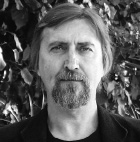“That’s the way we always did it” simply doesn’t work anymore
by Alex Apostolov, Editor-in-Chief

We have talked many times about how the world around us is changing. It is not only the protection, automation and control systems because of the invention of microprocessor-based devices and advanced communications. The electric power system is changing itself.
I have been in this industry for more than 45 years and throughout my career remember many times when asking about why we are using a certain protection scheme the answer has been “That’s the way we always did it!” and most of the time that was OK, but it doesn’t work anymore.
Therefore, we decided to dedicate this issue of the magazine to the evolving relationship between protection, automation and control systems and distributed energy resources.
This is the big change – from the world of centralized large power plants with synchronous machines connected to the transmission system, now to generation that is changing to renewable resources that are distributed over wide areas and are interfacing with the electric power grid through inverters whose behavior depends on the algorithms that their designers implemented.
If we think that we can protect a distribution feeder with overcurrent protection because that’s the way we always did it, we will quickly discover that when a short circuit fault occurs the protection relays are simply not going to see it. This is because the inverters simply do not produce enough fault current.
So now we need to start looking at different methods and principles that can help us solve this problem and various approaches are covered in a couple of the articles in this issue of the magazine.
Another challenge is the need for integration of the distributed energy resources with the protection, automation and control systems of the grid. The IEC 61850 standard is becoming a commonly used technology to support such functionality and now we need to properly model the distributed energy resources and their related PAC functions, so they can operate in the most efficient way. Many experts from countries around the world are working together to define the modeling of DERs of different kinds with the electric power grid based on the principles defined in the IEC 61850 standard.
This requires the reuse of many of the existing logical nodes already included in the core standard, while at the same time there is a need for the definition of dedicated logical notes to better address the functionality of the DER’s domain – work that is done by the different task forces working on IEC 61850-7-420 in IEC Technical Committee 57 Working Group 17.
One of the commonly used functions in such systems is the required ride-through capability. It is characterized with the needs to be able to withstand voltage drops during different system conditions for a certain period, without disconnecting from the electric power grid. Many countries have established their own ride-through characteristics, so that is why it is necessary to define specific profiles in order to properly represent them in the IEC 61850 model. These issues related to the modeling of PAC functions are also discussed in this issue of the magazine.
There are many other issues that must be addressed for the proper integration of DERs, especially the ones that are connected to the grid through inverters. If we have a microgrid or a part of the system that is operating powered by inverter only based resources, we are losing the traditional relationship between frequency and load/generation balance, which will force us to look at communications based methods to determine what is the available generation and load.
This is also something that is very different from the way “we always did this” balancing in synchronous generators-based systems where the frequency will drop if we don’t have enough generation or will go up if the load is too small.
This is not valid anymore when we have inverter-based generation. Therefore, we always must look for new and innovative methods to perform all the protection, automation and control related functions in the grid of today and especially in the future.
“The secret of change is to focus all of your energy not on fighting the old but building on the new.”
Socrates (470-399 BC)








